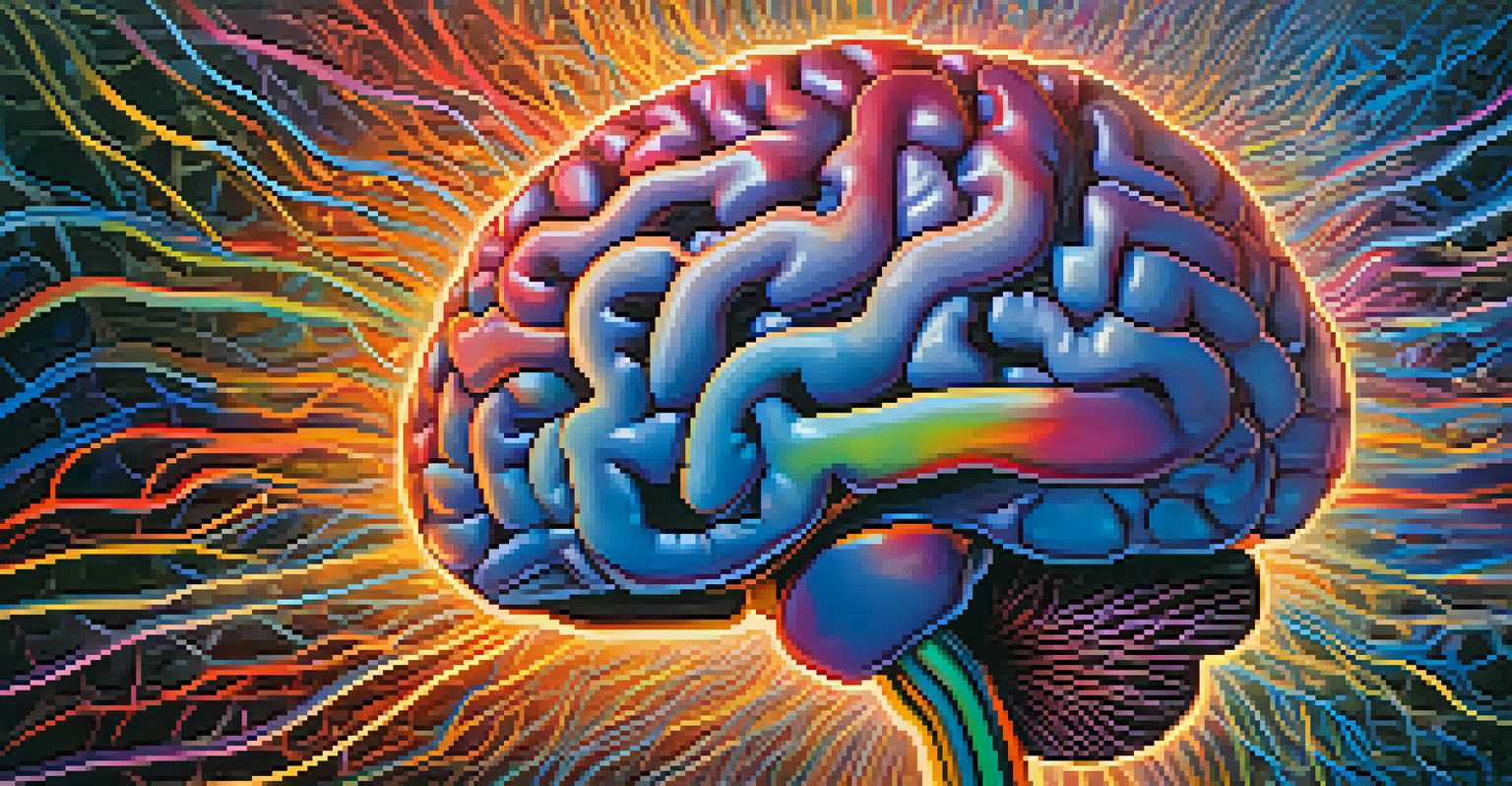Challenges in Integrating Entheogens into Mainstream Therapy

Understanding Entheogens and Their Potential Uses
Entheogens, often referred to as psychedelics, are substances that can alter perception and consciousness. These include well-known compounds like psilocybin and ayahuasca. Their potential therapeutic benefits have been gaining attention, especially for conditions like PTSD and depression.
Psychedelics are a catalyst for change, not the change itself.
Incorporating entheogens into therapy is not just about the substances themselves, but also about understanding their cultural and historical significance. Many of these substances have been used for centuries in spiritual and healing practices across various cultures. This rich background can inform modern therapeutic applications.
However, the integration of these substances into conventional therapy raises questions about safety, efficacy, and ethical considerations. Practitioners must navigate a complex landscape of research and anecdotal evidence to provide informed care.
Legal and Regulatory Barriers to Usage
One of the most significant challenges in integrating entheogens into therapy is the legal landscape. In many countries, substances like psilocybin and MDMA are classified as illegal drugs, which limits research and clinical application. This legal status can create a significant barrier for therapists interested in exploring these treatments.

Despite ongoing research showing promising results, the regulatory framework often lags behind scientific findings. Regulatory bodies are cautious, requiring extensive data on safety and efficacy before approving any new treatment modalities. This slow-moving process can frustrate both researchers and potential patients seeking alternative therapies.
Therapeutic Potential of Entheogens
Entheogens like psilocybin and ayahuasca show promise for treating conditions such as PTSD and depression.
Advocacy for changes in legislation is growing, but it is a complicated process. Many stakeholders, including medical professionals, policymakers, and the public, must come together to reshape perceptions and regulations surrounding these substances.
Stigma Surrounding Psychedelic Substances
Stigma plays a significant role in the hesitance to embrace entheogens in mainstream therapy. Many people associate psychedelics with recreational drug use, which can taint their perception as legitimate therapeutic options. This stigma can deter patients from seeking out these treatments, even when they may be beneficial.
The use of psychedelics in therapy is not about getting high; it's about helping people heal.
Therapists may also feel the weight of this stigma, fearing backlash from colleagues or regulatory boards if they advocate for or use entheogens in treatment. This fear can lead to a lack of open dialogue about the potential benefits and appropriate contexts for these substances in therapy.
To overcome stigma, education is crucial. Increasing awareness about the scientific research supporting the therapeutic use of entheogens can help shift public perception and encourage more professionals to explore their benefits.
Lack of Trained Professionals in Entheogen Therapy
Another hurdle is the shortage of trained professionals equipped to administer entheogenic therapies. Unlike traditional therapy, working with psychedelics requires a unique skill set that combines psychological expertise with an understanding of the substances themselves. This gap in training can limit access to these innovative treatment options.
Proper training programs are essential for ensuring that therapists can navigate the complexities of entheogenic therapy safely. This includes understanding the substances, managing potential side effects, and facilitating the therapeutic experience. Without adequate training, both therapists and patients may face unnecessary risks.
Barriers to Entheogen Integration
Legal restrictions and stigma hinder the acceptance and research of entheogens in therapeutic settings.
As interest in this field continues to grow, developing robust training programs is crucial. Collaborations between academic institutions and therapy organizations could pave the way for a new generation of skilled professionals.
Need for Comprehensive Clinical Research
While some studies have shown promising results regarding the therapeutic potential of entheogens, comprehensive clinical research is still lacking. Many existing studies are small-scale or lack rigorous methodologies, making it difficult to draw definitive conclusions. More extensive research is vital to understand the full scope of benefits and risks associated with these substances.
Clinical trials must adhere to strict guidelines to ensure safety and efficacy. This means not only measuring the therapeutic outcomes but also understanding the contexts in which entheogens are most effective. This holistic approach can help build a solid evidence base for wider acceptance.
As the body of research grows, so too will the understanding of how to integrate these treatments into mainstream therapy. Collaboration between researchers, therapists, and regulatory bodies will be essential in this journey.
Ethical Considerations in Therapy
Integrating entheogens into therapy raises several ethical considerations. Informed consent is paramount, as patients must fully understand what they are engaging in, including potential risks and benefits. Therapists have a responsibility to provide clear and comprehensive information to ensure patients can make informed decisions.
Additionally, the therapeutic setting must be carefully considered. Entheogenic experiences can be profoundly transformative, but they can also be challenging. Creating a safe, supportive environment is essential for facilitating positive outcomes and addressing any adverse reactions that may arise.
Need for Trained Professionals
There is a shortage of trained therapists who can safely administer entheogenic therapies, limiting access to these treatments.
Ethical frameworks must be developed to guide practitioners in this evolving field. Ongoing discussions among professionals can help establish best practices that prioritize patient safety and well-being.
Future Possibilities for Entheogenic Therapy
Despite the challenges, the future of entheogenic therapy looks promising. As awareness and research expand, more therapists may begin to explore these substances as viable treatment options. This shift could lead to significant advancements in mental health care, offering new hope to those who have not found relief through traditional methods.
Innovative approaches, such as combining entheogens with established therapeutic practices, may yield powerful results. For instance, integrating mindfulness or cognitive-behavioral techniques with psychedelic experiences could enhance their therapeutic effects, providing a more holistic approach to mental health.

Ultimately, the integration of entheogens into mainstream therapy will require collaboration, open-mindedness, and a commitment to understanding their potential. As the stigma fades and research progresses, we may see a new era in mental health treatment.